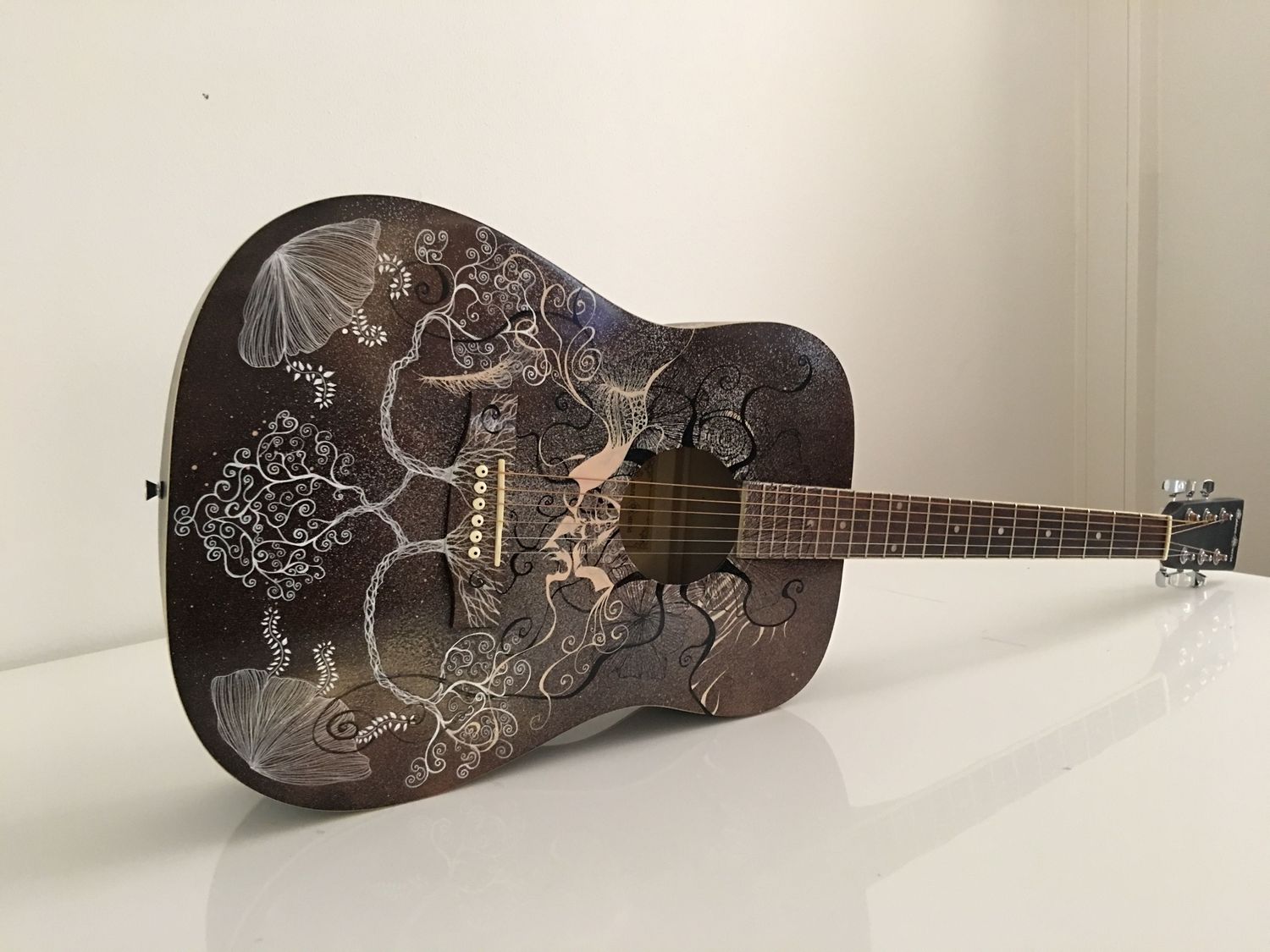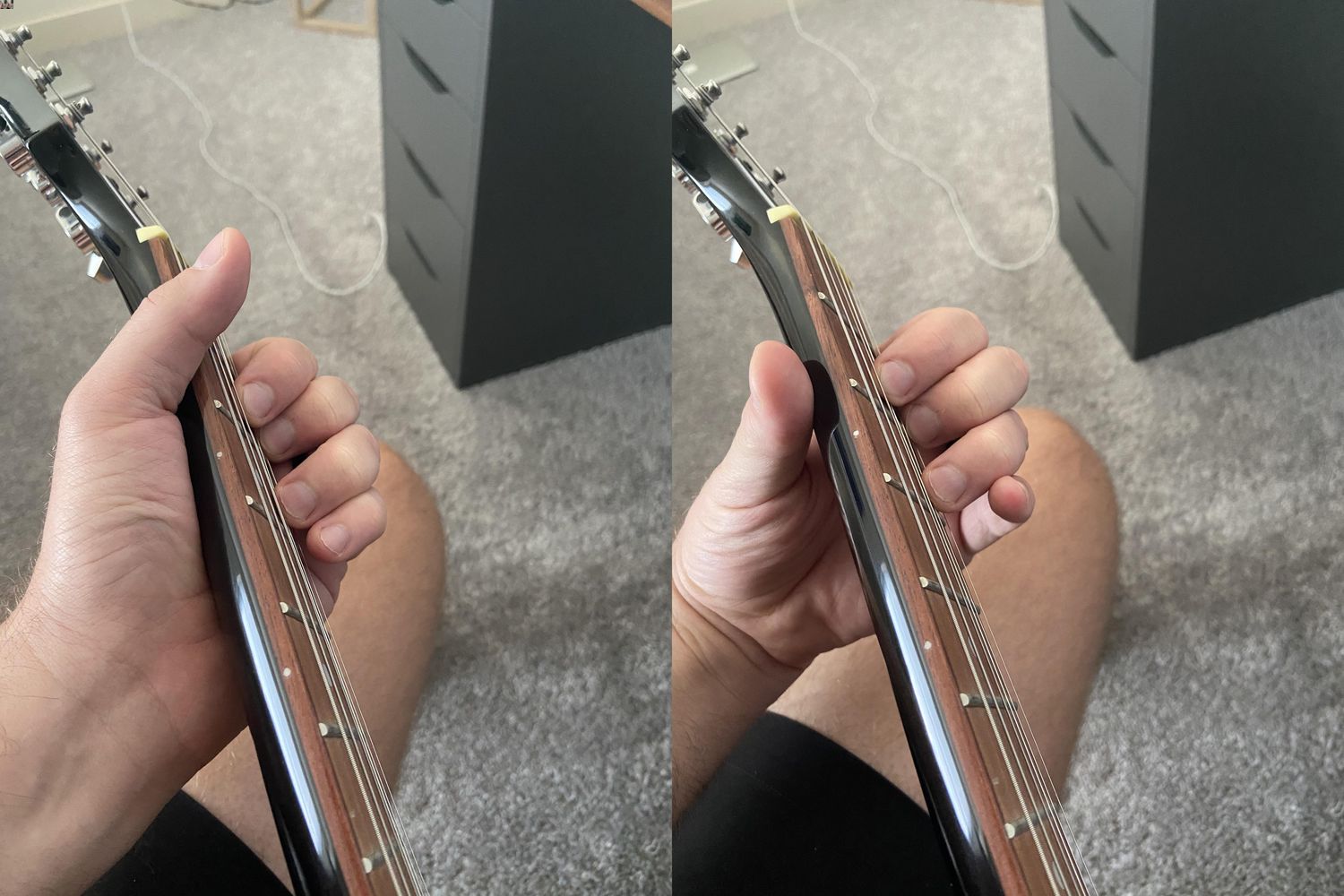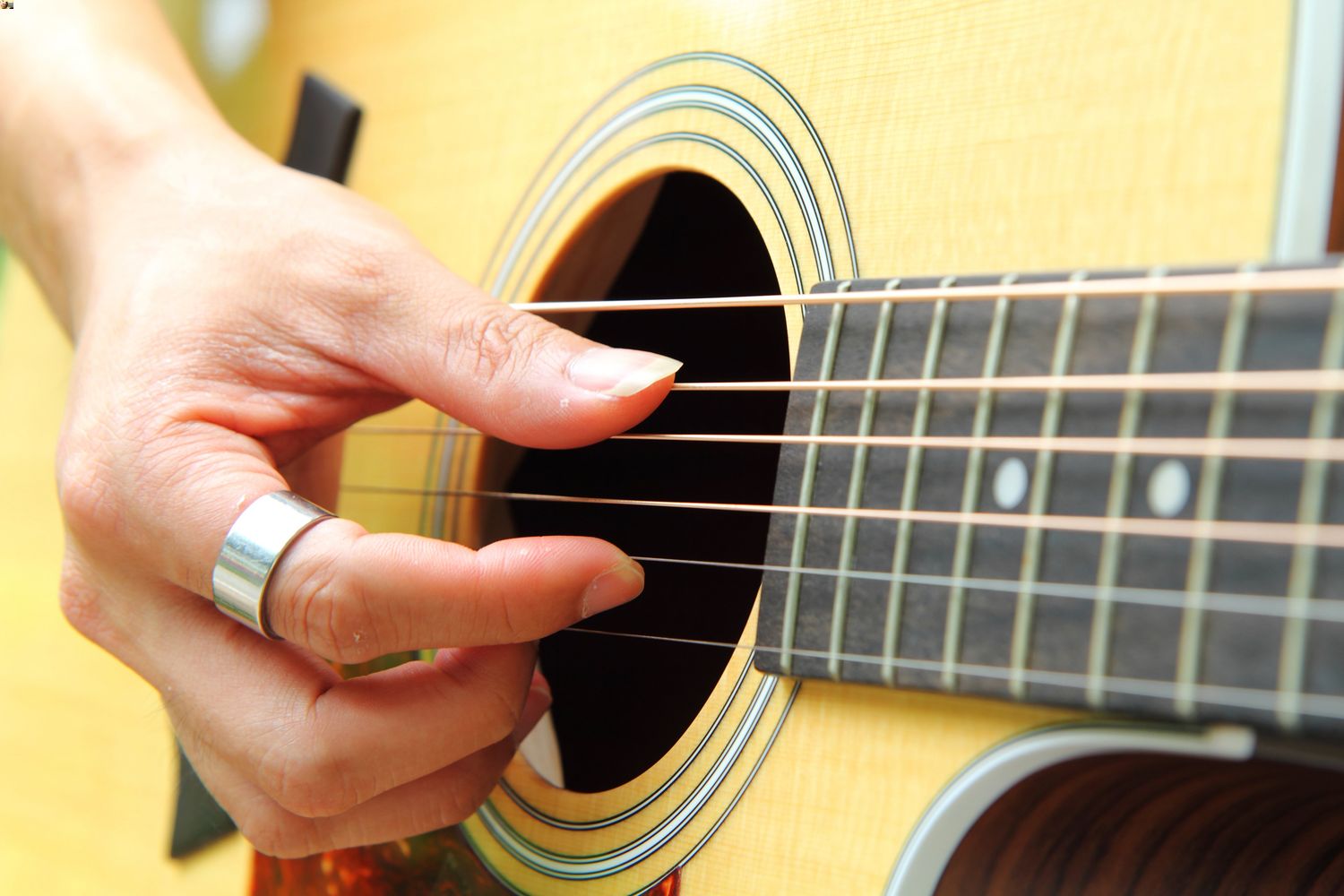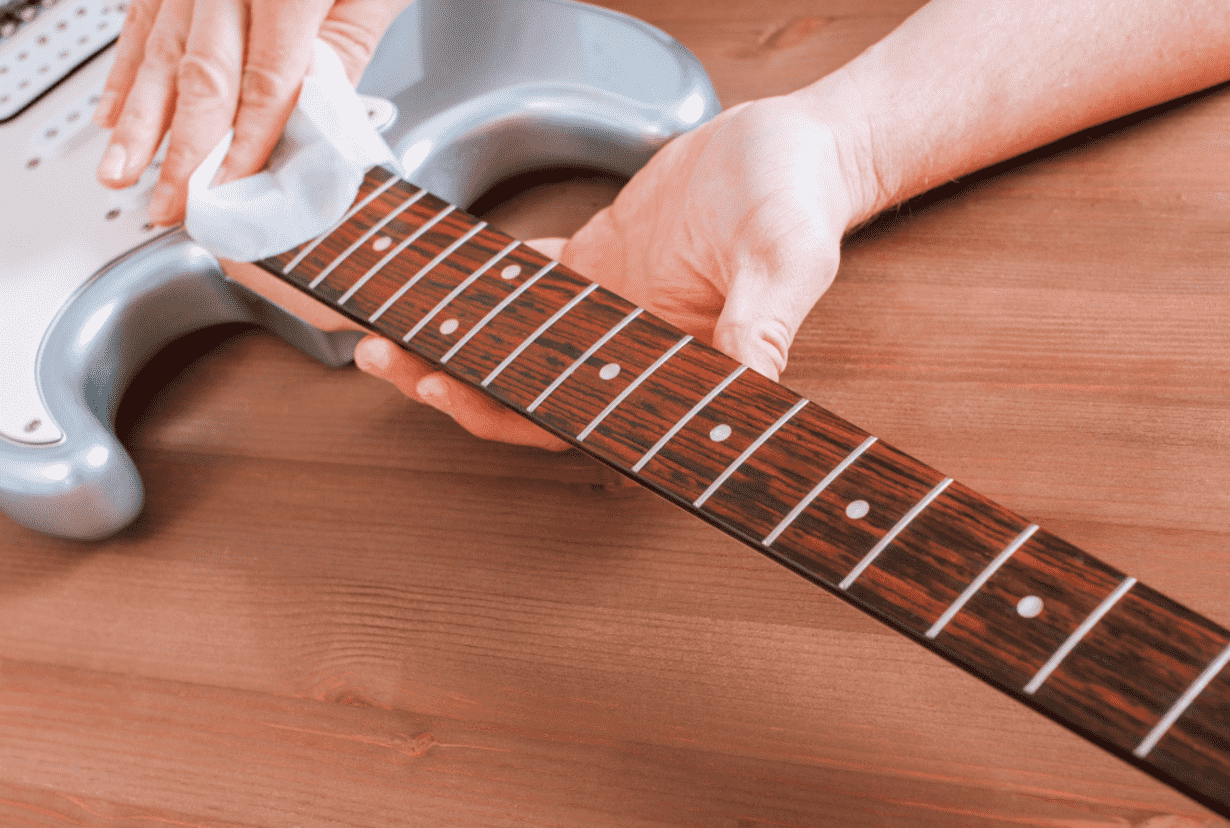Home>Instruments>Guitar>How To Customize A Guitar
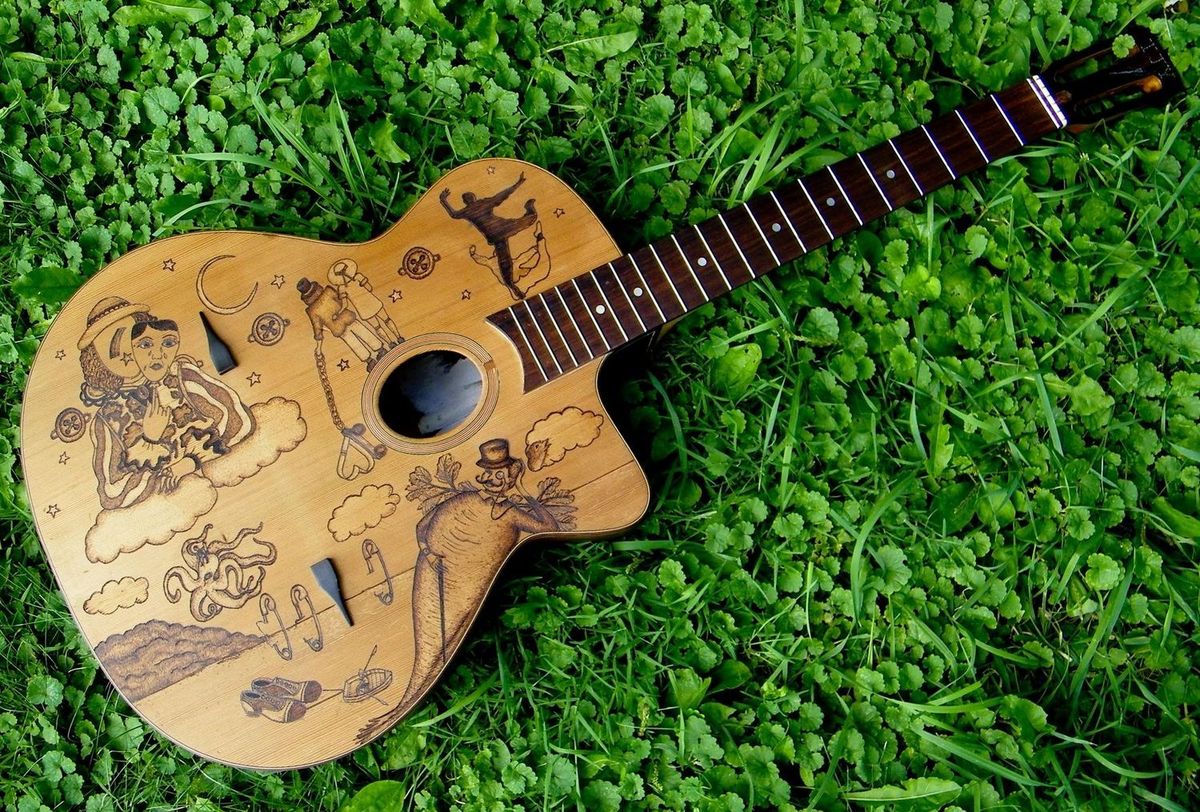

Guitar
How To Customize A Guitar
Published: February 12, 2024
Learn how to customize your guitar with our step-by-step guide. Discover tips and techniques for enhancing your instrument. Perfect for guitar enthusiasts.
(Many of the links in this article redirect to a specific reviewed product. Your purchase of these products through affiliate links helps to generate commission for AudioLover.com, at no extra cost. Learn more)
Table of Contents
Introduction
Customizing a guitar is a deeply personal and creative endeavor that allows musicians to imbue their instruments with unique character and style. Whether you're aiming to achieve a specific tone, enhance playability, or simply make a visual statement, the process of customizing a guitar opens up a world of possibilities. From selecting the right guitar for customization to adding custom hardware and pickups, each step in the customization journey requires careful consideration and skillful execution.
In this comprehensive guide, we will delve into the art of customizing a guitar, exploring the various options available and providing a detailed roadmap for transforming a stock instrument into a personalized masterpiece. Whether you're a seasoned luthier or a novice enthusiast, this guide will equip you with the knowledge and inspiration needed to embark on your own customization project.
Throughout this guide, we will cover essential topics such as choosing the right guitar for customization, selecting customization options, preparing the guitar for modification, painting and finishing techniques, adding custom hardware, installing custom pickups, customizing the neck and fretboard, and completing the final setup and testing. By the end of this journey, you will have a newfound understanding of the intricate process of guitar customization and the satisfaction of wielding a truly one-of-a-kind instrument.
So, grab your tools, unleash your creativity, and join us as we embark on this exciting exploration of guitar customization. Whether you're seeking to unleash your inner artist, optimize your instrument's performance, or simply express your individuality, the world of guitar customization is brimming with endless possibilities, and we're here to guide you every step of the way.
Choosing the Right Guitar
Before diving into the customization process, it’s crucial to select a guitar that serves as a solid foundation for your creative vision. Whether you’re starting with a new instrument or revamping an existing one, several factors should influence your decision.
Body Type and Wood Selection: The first consideration is the body type and wood composition of the guitar. Different woods impart distinct tonal characteristics, so it’s essential to choose one that aligns with your sonic preferences. For example, mahogany is revered for its warm, resonant properties, while alder offers a balanced tonal profile with pronounced midrange.
Scale Length and Neck Profile: The scale length and neck profile significantly impact playability and comfort. Longer scale lengths generally provide tauter string tension and clearer articulation, making them suitable for drop tunings and heavy riffing. Conversely, shorter scales offer a more relaxed feel and facilitate easier string bending, ideal for lead playing and expressive phrasing.
Pickup Configuration: The pickup configuration, whether single-coil, humbucker, or a combination of both, greatly influences the guitar’s tonal versatility. Consider the genres you primarily play and the sonic characteristics you desire, as this will guide your choice of pickups for customization.
Budget and Quality: It’s essential to balance your budget with the overall quality of the instrument. While it’s tempting to splurge on a high-end guitar, many mid-range options offer excellent build quality and playability, providing a solid platform for customization without breaking the bank.
By carefully evaluating these factors, you can choose a guitar that aligns with your musical preferences and customization goals, setting the stage for an exciting and rewarding customization journey.
Selecting Customization Options
Once you’ve chosen the right guitar as your canvas, the next step is to consider the customization options that will best fulfill your artistic and sonic aspirations. Customization can encompass a wide array of modifications, each contributing to the overall personality and performance of the instrument. Here are some popular customization options to consider:
- Pickup Upgrades: Swapping out stock pickups for aftermarket options can dramatically alter the guitar’s tonal character. Whether you seek the searing output of high-gain humbuckers, the chime and sparkle of single-coils, or the balanced versatility of P90s, selecting the right pickups is pivotal in shaping your instrument’s sonic identity.
- Hardware Replacement: Upgrading hardware components such as tuners, bridges, and tailpieces can enhance tuning stability, sustain, and overall functionality. Quality hardware not only improves performance but also adds a touch of refinement to the instrument’s aesthetics.
- Custom Finishes: Applying custom paint jobs, unique finishes, or eye-catching graphics allows you to express your individuality and make a visual statement with your instrument. Whether it’s a vintage-inspired relic finish, a bold burst pattern, or a striking graphic design, the finish serves as a visual extension of your artistic vision.
- Electronics Modifications: Beyond pickup upgrades, customizing the guitar’s electronic components, such as tone capacitors, potentiometers, and wiring configurations, can fine-tune the instrument’s tonal nuances and responsiveness, offering a tailored playing experience.
- Neck and Fretboard Customization: From neck profile adjustments to fretwork refinements, the neck and fretboard play a pivotal role in the instrument’s playability. Customizing the neck’s shape, wood finish, or fret size can cater to your ergonomic preferences and facilitate effortless fretting and bending.
When selecting customization options, it’s essential to align them with your musical style, playing preferences, and sonic goals. Each modification should contribute meaningfully to the instrument’s overall functionality and reflect your artistic sensibilities. By carefully curating the customization options, you can transform your guitar into a personalized masterpiece that resonates with your musical identity.
Preparing the Guitar for Customization
Before embarking on the actual customization work, it’s crucial to prepare the guitar to ensure a seamless and professional outcome. Proper preparation lays the foundation for successful modifications and helps safeguard the instrument from inadvertent damage. Here are the essential steps to prepare the guitar for customization:
- Disassembly: Begin by carefully disassembling the guitar, removing the strings, pickups, pickguard, bridge, and other hardware components. Labeling each part and organizing them methodically will streamline the reassembly process and prevent confusion later on.
- Surface Cleaning and Inspection: Thoroughly clean the guitar’s body, neck, and hardware to remove accumulated grime, oils, and residues. Inspect the surfaces for any imperfections, dents, or irregularities that may require attention before proceeding with the customization process.
- Surface Preparation: If you intend to refinish the guitar, proper surface preparation is paramount. Stripping the existing finish, sanding the wood, and applying a suitable base coat are essential steps to ensure the new finish adheres properly and exhibits a professional-looking result.
- Modifications Planning: Take this opportunity to plan the layout of new components, such as pickups, switches, and control knobs. Ensure that the chosen customization options align with the guitar’s design and ergonomics, allowing for a cohesive and harmonious integration of new elements.
- Protecting Unaltered Areas: If certain areas of the guitar, such as the neck or fretboard, are not undergoing modifications, it’s crucial to protect them from accidental damage during the customization process. Masking off these areas with painter’s tape and protective coverings safeguards them from unintended alterations.
By meticulously preparing the guitar for customization, you set the stage for a successful and gratifying transformation. This preparatory phase not only ensures the smooth execution of modifications but also demonstrates a conscientious approach to preserving the instrument’s integrity throughout the customization journey.
Painting and Finishing
Painting and finishing are transformative stages in the guitar customization process, offering the opportunity to impart a distinct visual identity to the instrument. Whether you’re aiming for a classic burst finish, a vibrant solid color, or a striking custom graphic, the painting and finishing techniques play a pivotal role in realizing your artistic vision. Here’s a comprehensive overview of the essential steps involved in painting and finishing a guitar:
- Surface Preparation: Before applying any paint or finish, meticulous surface preparation is paramount. This involves sanding the guitar’s body to achieve a smooth and uniform surface, free from imperfections and blemishes. Proper surface preparation ensures optimal adhesion and a flawless finish.
- Primer Application: Applying a high-quality primer serves as the foundation for the subsequent layers of paint. The primer not only enhances adhesion but also fills minor imperfections and promotes an even color base for the topcoat.
- Paint Application: Whether using aerosol cans or professional spray equipment, applying the chosen paint requires precision and patience. Achieving even coverage, avoiding runs and drips, and maintaining a consistent spraying distance are crucial aspects of a successful paint application.
- Color Sanding and Buffing: Once the paint has cured, color sanding and buffing are performed to level the finish, remove orange peel texture, and achieve a smooth, glass-like surface. This labor-intensive process results in a lustrous and flawless finish that accentuates the guitar’s aesthetic appeal.
- Clear Coat Application: The clear coat serves as a protective layer, shielding the paint from wear, moisture, and UV exposure. Applying multiple coats of clear finish, interspersed with meticulous sanding between layers, yields a durable and glossy surface that enhances the visual allure of the guitar.
- Custom Graphics or Artwork: For those seeking a personalized touch, incorporating custom graphics or artwork onto the guitar’s body is a captivating option. Whether through hand-painting, airbrushing, or decal application, custom artwork adds a distinctive and individualized flair to the instrument.
By meticulously executing the painting and finishing process, you breathe new life into the instrument, bestowing it with a captivating visual allure that complements its sonic prowess. Whether aiming for a vintage-inspired relic finish, a sleek solid color, or a bespoke graphic design, the painting and finishing stage is where the guitar’s visual identity truly comes to fruition.
Adding Custom Hardware
Custom hardware upgrades represent a significant facet of guitar customization, offering the opportunity to enhance the instrument’s functionality, aesthetics, and overall performance. From precision-engineered tuners to high-performance bridges, selecting and installing custom hardware components can elevate the guitar to new heights. Here’s a comprehensive exploration of the essential considerations and steps involved in adding custom hardware to a guitar:
- Tuners: Upgrading the tuners can vastly improve tuning stability, tuning precision, and string retention. Whether opting for locking tuners, vintage-style tuners, or specialty models with enhanced gear ratios, selecting tuners that align with your tuning preferences and playing style is crucial.
- Bridges and Tailpieces: The bridge and tailpiece significantly influence the guitar’s intonation, sustain, and string action. Custom options such as vibrato systems, adjustable bridges, or premium tailpieces can tailor the instrument’s response and playability to your exacting specifications.
- Strap Buttons and Locks: Ensuring secure and reliable strap attachment is essential for live performances and stage mobility. Installing custom strap buttons or strap locks provides peace of mind and prevents unintended instrument drops or mishaps during vigorous performances.
- Control Knobs and Switches: Custom control knobs and switches not only offer ergonomic benefits but also contribute to the guitar’s visual aesthetics. Whether opting for knurled metal knobs, vintage-style switch caps, or illuminated control options, these small details can impart a touch of refinement to the instrument’s appearance.
- Nuts and Saddles: Upgrading the nut and saddle materials to high-quality bone, graphite, or synthetic compounds can enhance string resonance, sustain, and tonal clarity. Additionally, customizing the nut and saddle dimensions can optimize string spacing and action for improved playability.
- Hardware Compatibility and Installation: When selecting custom hardware components, ensuring compatibility with the guitar’s existing design and dimensions is paramount. Precise installation, attention to detail, and adherence to manufacturer specifications are essential for seamless integration and optimal performance.
By carefully selecting and installing custom hardware components, you can tailor the guitar to your exacting standards, fortify its reliability, and infuse it with a touch of personalized refinement. Whether pursuing enhanced tuning stability, improved intonation, or a heightened visual allure, custom hardware upgrades represent a tangible and rewarding investment in the instrument’s evolution.
Installing Custom Pickups
Custom pickups serve as a cornerstone of sonic customization, profoundly influencing the guitar’s tonal character and expressive capabilities. Whether aiming for searing high-gain output, vintage warmth, or nuanced tonal versatility, selecting and installing custom pickups empowers you to sculpt your instrument’s sonic identity. Here’s an in-depth exploration of the essential considerations and steps involved in installing custom pickups:
- Pickup Selection: Choosing the right pickups entails assessing your musical style, tonal preferences, and playing techniques. Whether opting for humbuckers, single-coils, P90s, or specialized pickups, selecting models that complement your sonic vision is pivotal.
- Wiring Configuration: Customizing the pickup wiring scheme can unlock a myriad of tonal possibilities. Whether incorporating coil-splitting, series/parallel switching, or phase reversal options, tailored wiring configurations can expand the guitar’s sonic palette and responsiveness.
- Pickup Height and Balance: Adjusting the pickup height and balance is crucial for optimizing output, tonal clarity, and string-to-string balance. Fine-tuning the pickups’ proximity to the strings ensures optimal response and articulation across the fretboard.
- Potting and Wax Sealing: Potting the pickups in wax or epoxy resin helps mitigate microphonic feedback and unwanted resonance, enhancing the pickups’ stability and tonal integrity, particularly in high-gain environments.
- Mounting and Alignment: Precise mounting and alignment of the pickups is essential for optimal string sensing, harmonic response, and tonal consistency across the instrument’s range. Ensuring secure and accurate installation minimizes the risk of unwanted noise and maximizes the pickups’ sonic potential.
- Testing and Fine-Tuning: Upon installation, thorough testing and fine-tuning of the pickups’ output, balance, and tonal characteristics are imperative. Adjusting pole piece heights, pickup angles, and wiring connections allows for meticulous optimization of the pickups’ performance.
By skillfully installing custom pickups and tailoring their configuration to your sonic preferences, you can unlock a universe of tonal possibilities and imbue the instrument with a distinctive sonic signature. Whether pursuing searing leads, dynamic cleans, or rich, expressive tones, custom pickups represent a profound and rewarding avenue for shaping the guitar’s sonic identity to reflect your artistic vision.
Customizing the Neck and Fretboard
Customizing the neck and fretboard of a guitar can profoundly enhance playability, ergonomic comfort, and overall performance, catering to the player’s individual preferences and playing style. From neck profile modifications to fretwork refinements, the customization of these crucial components empowers musicians to tailor their instruments to exacting standards. Here’s a comprehensive exploration of the essential considerations and steps involved in customizing the neck and fretboard:
- Neck Profile Adjustments: Modifying the neck profile, whether altering the depth, width, or contour, can tailor the instrument’s feel to the player’s hand anatomy and playing technique. Whether pursuing a slim, fast profile for shredding or a substantial, rounded profile for enhanced resonance, custom neck shaping can optimize the instrument’s ergonomics.
- Fretwork Refinements: Ensuring impeccably leveled, crowned, and polished frets is essential for facilitating smooth string bending, accurate intonation, and comfortable fretting. Custom fretwork, including precision fret dressing and end beveling, contributes to impeccable playability and fretting comfort.
- Fretboard Radius and Material: Customizing the fretboard radius, whether opting for a vintage 7.25″ curve, a modern 12″ radius, or a compound radius, can influence string action, bending ease, and note articulation. Additionally, selecting high-quality fretboard materials such as rosewood, ebony, or maple can further tailor the instrument’s tonal characteristics and tactile response.
- Neck Finish and Treatment: Customizing the neck finish, whether opting for a satin-smooth feel, a hand-rubbed oil finish, or a glossy polyurethane coat, can significantly impact the playing experience. Tailoring the neck’s finish to minimize stickiness and maximize comfort is crucial for effortless fretting and unhindered hand movement.
- Inlay and Binding Customization: Incorporating custom fretboard inlays, binding, or purfling allows for personalized aesthetic embellishments, adding a touch of visual refinement and individuality to the instrument’s fretboard design.
- Nut and String Alignment: Ensuring precise nut slotting, string spacing, and nut material selection is essential for optimal string action, intonation, and tuning stability. Customizing the nut and string alignment facilitates consistent string-to-fret interaction and mitigates tuning issues.
By skillfully customizing the neck and fretboard, musicians can tailor the instrument to their exacting standards, optimizing playability, comfort, and tonal responsiveness. Whether pursuing a streamlined, modern playing feel, a vintage-inspired aesthetic, or ergonomic refinements tailored to specific playing techniques, the customization of the neck and fretboard represents a profound and rewarding avenue for personalizing the instrument’s feel and performance.
Final Setup and Testing
As the culmination of the guitar customization journey, the final setup and testing phase plays a pivotal role in ensuring that the instrument achieves optimal playability, tonal performance, and overall functionality. This critical stage involves meticulous adjustments, fine-tuning, and rigorous testing to validate the success of the customization efforts. Here’s a comprehensive overview of the essential steps involved in the final setup and testing process:
- Truss Rod Adjustment: Evaluating and, if necessary, adjusting the neck’s relief via the truss rod is crucial for achieving optimal string action and neck stability. Balancing the neck’s curvature ensures uniform string height and facilitates comfortable fretting across the fretboard.
- Bridge and Nut Adjustment: Fine-tuning the bridge height, saddle positioning, and nut slotting is essential for precise string intonation, string action, and overall tuning stability. Ensuring consistent string length and alignment optimizes the instrument’s tonal accuracy and playability.
- Intonation Calibration: Calibrating the instrument’s intonation by adjusting the saddle positions ensures that each string produces accurate pitches across the fretboard. This critical step guarantees that chords and notes ring true and in tune throughout the instrument’s range.
- Electronics and Control Testing: Rigorously testing the functionality of the electronics, including pickup selections, tone controls, and switch operations, ensures that the customized wiring configurations and components operate as intended, delivering the desired tonal versatility and responsiveness.
- String Selection and Action Adjustment: Selecting suitable strings based on gauge, material, and tonal characteristics, and fine-tuning the string action, facilitates optimal string response, tonal articulation, and playing comfort tailored to the player’s preferences.
- Playability Assessment: Thoroughly evaluating the instrument’s playability, fretting comfort, string bending ease, and overall ergonomic feel allows for nuanced adjustments to optimize the playing experience and address any potential areas of improvement.
- Tonal Evaluation: Conducting comprehensive tonal assessments across various playing styles, genres, and sonic scenarios enables the validation of the customized pickups, wiring configurations, and hardware choices, ensuring that the instrument delivers the intended tonal versatility and sonic expressiveness.
By meticulously executing the final setup and testing procedures, you can validate the success of the customization efforts and ensure that the instrument embodies the desired playability, tonal characteristics, and overall performance. Whether pursuing a specific tonal identity, ergonomic refinements, or tailored playability enhancements, the final setup and testing phase represents the culmination of the guitar customization journey, affirming the instrument’s readiness to inspire and empower musicians.
Conclusion
Embarking on the journey of customizing a guitar is a deeply enriching and transformative experience that allows musicians to infuse their instruments with personalized character, sonic prowess, and visual allure. From the meticulous selection of the right guitar to the thoughtful consideration of customization options, each step in the customization process represents an opportunity for artistic expression and sonic refinement.
Throughout this comprehensive guide, we’ve explored the intricacies of guitar customization, delving into essential topics such as painting and finishing techniques, the installation of custom pickups, hardware upgrades, and the meticulous customization of the neck and fretboard. Each phase of the customization journey encapsulates a blend of craftsmanship, creativity, and technical expertise, culminating in the realization of a truly one-of-a-kind instrument.
By carefully curating the components, finishes, and modifications that align with your musical aspirations and playing style, you have the power to shape an instrument that resonates with your artistic vision and empowers your musical journey. Whether pursuing tonal versatility, ergonomic refinements, or visual distinctiveness, the art of guitar customization offers a canvas for self-expression and sonic exploration.
As you embark on your own customization endeavors, remember that the process is as much about the journey as it is about the destination. Embrace the creative challenges, relish the moments of inspiration, and celebrate the incremental refinements that culminate in the transformation of a stock guitar into a personalized masterpiece.
Ultimately, the art of guitar customization transcends the mere modification of an instrument; it embodies a deeply personal narrative, a testament to creativity, perseverance, and the pursuit of sonic excellence. May your customized guitar become a faithful companion, an extension of your musical identity, and a source of inspiration as you continue to explore the boundless realms of musical expression.



